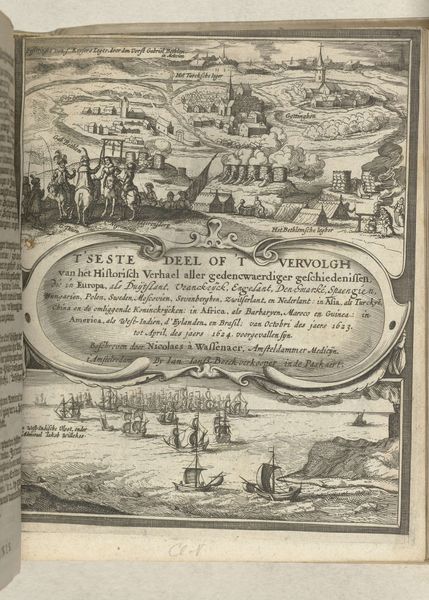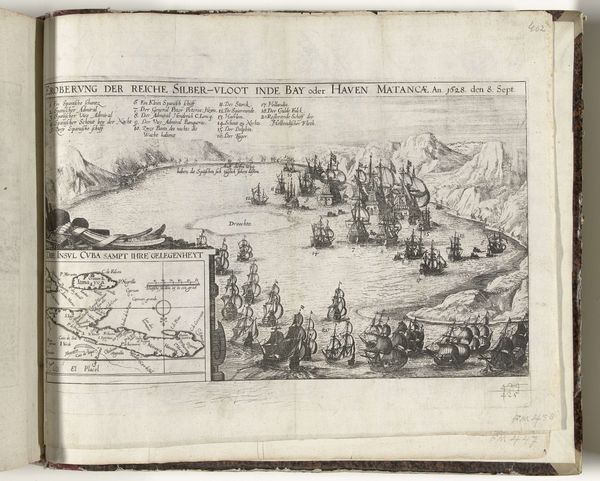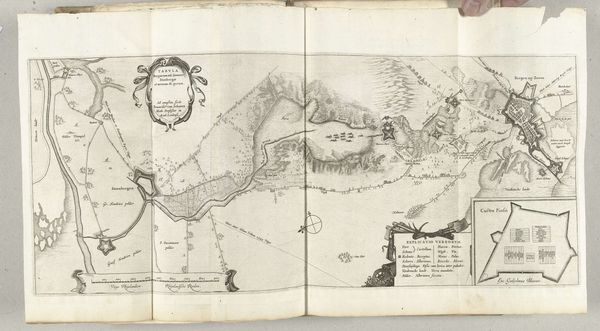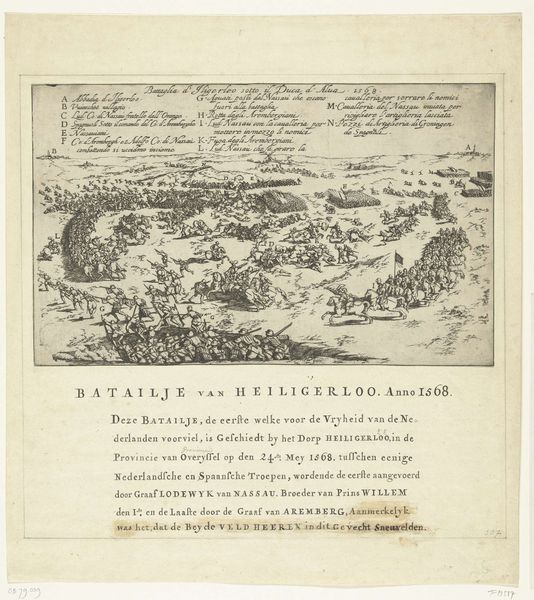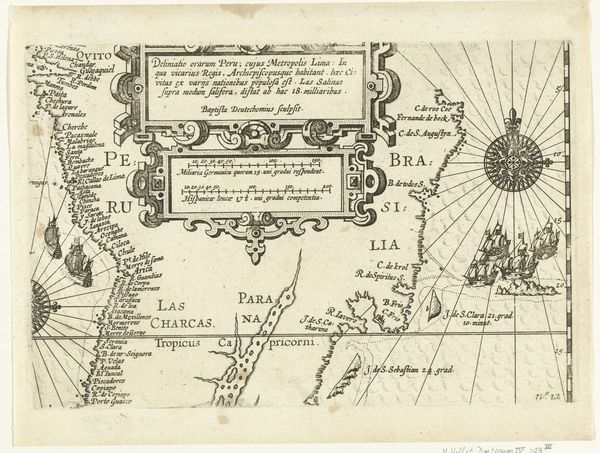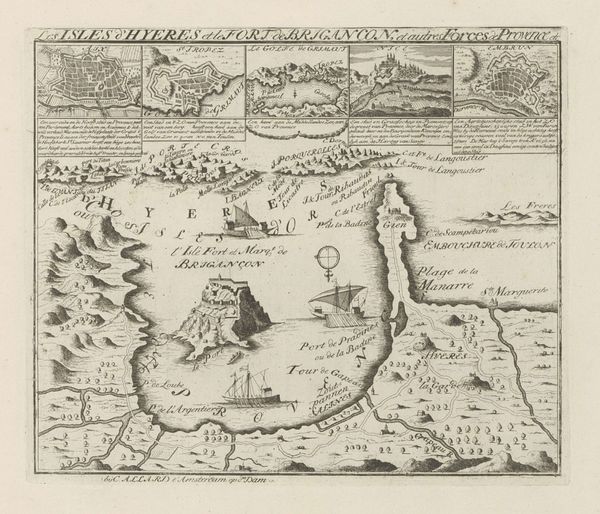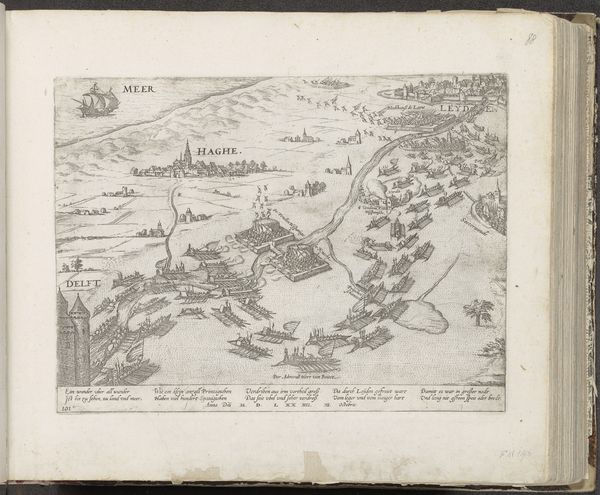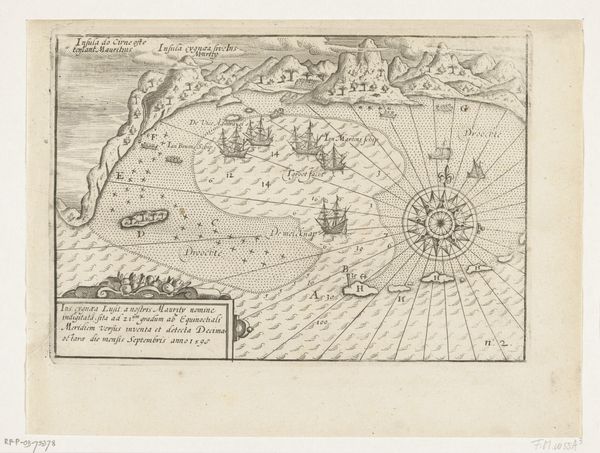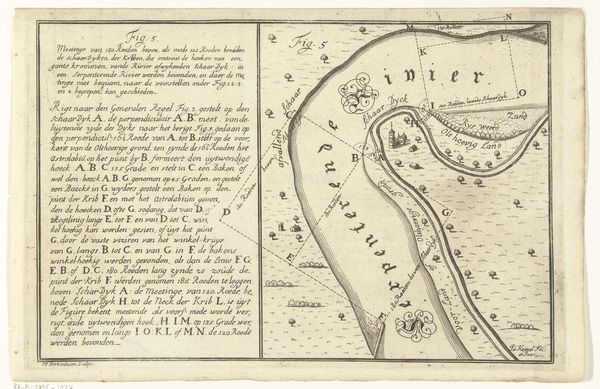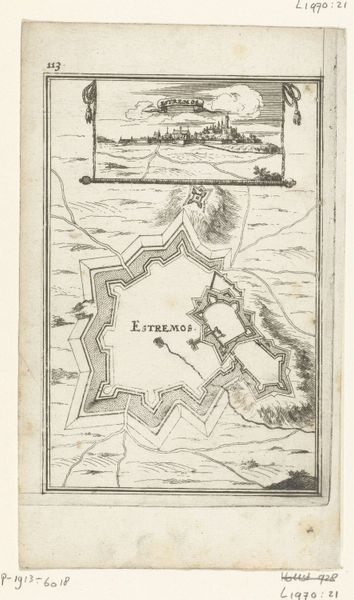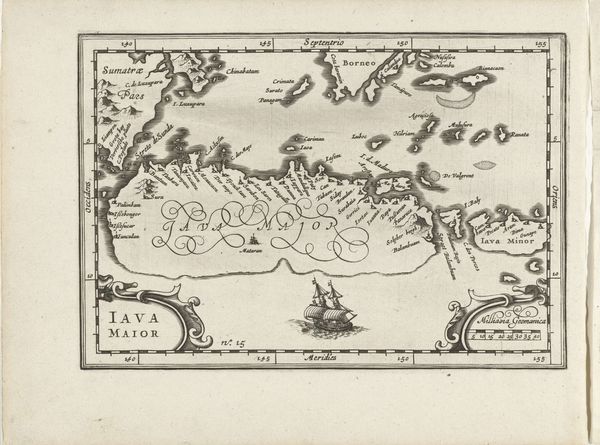
Titelblad van Historisch verhael, band 6 (dl. 18), 1629-1630 1629 - 1630
0:00
0:00
print, engraving
#
baroque
# print
#
pen work
#
cityscape
#
engraving
Dimensions: height 185 mm, width 145 mm
Copyright: Rijks Museum: Open Domain
Editor: This print, entitled "Titelblad van Historisch verhael, band 6," dates to between 1629 and 1630. It's quite detailed, showing cityscapes and nautical elements through engraving. What can you tell me about its significance within the historical context of the period? Curator: Looking at this, I am immediately struck by the representation of global power. Note how the print’s focus isn't merely on artistic expression but on cataloging historical events. The title itself, prominently displayed, highlights its role as a historical record, an "achtiende deel" – or eighteenth part – of a historical narrative. How do you interpret the inclusion of place names from Europe, Asia, Africa, and America? Editor: Well, it strikes me as indicative of a Dutch worldview at the time, encompassing its trade relations, perhaps also its colonial ambitions… a sort of declaration of its global reach? Curator: Precisely. It frames Dutch identity within an international stage, using place to suggest power and control of narratives regarding history itself. Think of the "Historisch Verhael" as not just recounting, but also constructing a Dutch vision of the world during the early 17th century. Also, observe the detailed renderings of naval fleets and cityscapes. What might those convey about Dutch society then? Editor: Possibly the importance of maritime power, as well as the burgeoning urban centers that propelled their economy? The cityscapes do present this idea of growing power. Curator: Precisely! The visual prominence of these elements communicates Dutch commercial prowess and expansionism, reinforcing national pride through carefully constructed imagery, which directly reflects socio-political agendas and public identity formation in that time. Editor: That is interesting – seeing how art wasn't necessarily created for "art's sake," but to construct cultural and political narratives. I'll never look at these works the same way. Curator: Exactly, and hopefully you are taking with you that perspective for when viewing any art, from any place and era.
Comments
No comments
Be the first to comment and join the conversation on the ultimate creative platform.
